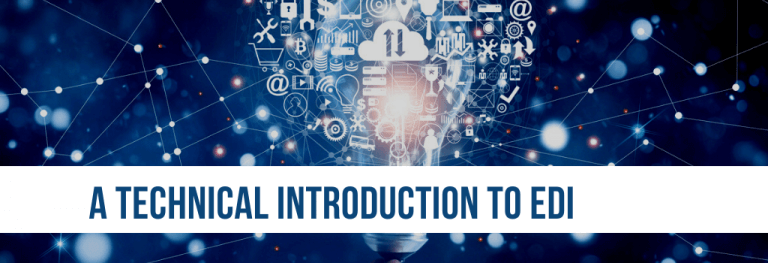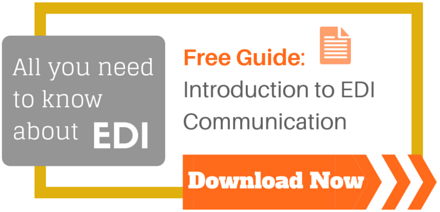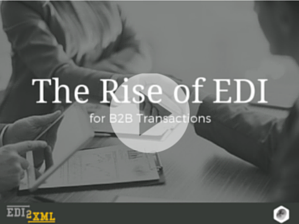Aug 2013

This post was updated to reflect current trends and information.
A Technical Introduction to EDI
Before I start explaining anything about EDI2XML, I would like to start by giving a more technical introduction to EDI, its usage, and its history. EDI is an acronym for Electronic Data Interchange. It has been around for a long time and has been used by retailers and private corporations in several verticals (health, retail, insurance…). When people in the business community talk about exchanging “EDI transactions“, they refer to a combination of the following:
- Structured EDI file format including version, revision, standard…
- Protocol of communication, medium and security (FTP, sFTP, AS2, VAN…)
- Business partners (vendors, retailers…)
Simply speaking, EDI is the process of “electronically” exchanging documents between business partners in a pre-defined format. The information is transmitted in a secured manner. Normally, files with EDI format are structured and follow “EDI standards”.
EDI Standards
There are several widely used EDI standards, including:
- ANSI ASC X12: This is the predominant standard used in North America for various industries, such as retail, healthcare, transportation, and finance. It defines specific transaction sets like purchase orders (850), invoices (810), and shipping notices (856).
- UN/EDIFACT: This is an international EDI standard developed by the United Nations. It is widely used outside of North America and is popular in sectors like transportation, logistics, and customs. UN/EDIFACT includes a comprehensive set of message types covering various business processes.
- GS1 EDI: This standard is developed by GS1, a global organization focused on supply chain standards. It is used primarily in the retail and consumer goods industries. GS1 EDI incorporates the GS1 barcoding standards and provides specific message types for processes like product catalog synchronization, purchase orders, and invoices.
- HIPAA EDI: The Health Insurance Portability and Accountability Act (HIPAA) introduced specific EDI standards for healthcare-related transactions. These standards ensure the secure and standardized exchange of sensitive patient data between healthcare providers, insurers, and other entities.
- TRADACOMS: Developed in the United Kingdom, TRADACOMS is an EDI standard commonly used in the retail industry. It includes message types for processes like order management, stock control, and invoicing.
These are just a few examples of the many EDI standards available. Each standard has its own message formats, data elements, and communication protocols. Organizations typically choose the appropriate standard based on their industry, geographic location, and trading partner requirements.
Read: What is a VAN ?
EDI X12
EDI has been evolving with different versions, revisions and sub-revisions. For example, in the X12 standard EDI format, I started my EDI career with the EDI version 3010. Today, we are working with much higher EDI versions such as 4010, 5010, 5020… It is important to note that within each one of the above versions, different revisions might exist.
EDI Transactions and Documents
Read: How does EDI2XML work ?
EDI documents are “number coded”; for example, a Purchase Order sent by a retailer to a vendor using EDI format is coded under the number “850”. The same applies for other documents such as 810 (for invoice), 856 (for Advance shipping notice), 820 (for Payment Advice), and 860 (for Retailer triggered Purchase Order Change). The list goes on and it is not limited to the above. For a more extensive list of EDI documents that EDI2XML supports, visit our EDI Document Library.
Each EDI document sent to a party has to be responded to by the other party by sending back a Functional Acknowledgment (FA 997). The 997 designates that the “structure” of the EDI file was certainly received, without looking at the “content” of the EDI formatted file. Both business partners understand the “content” of the information and they are able to translate into business terms. This is where EDI2XML comes into play to convert and translate the content and make it ready for integration.
To learn more about EDI, read our new blog “What is EDI (Electronic Data Interchange)?”
RELATED POSTS:
Electronic Data Interchange: Key Information You Need to Know










